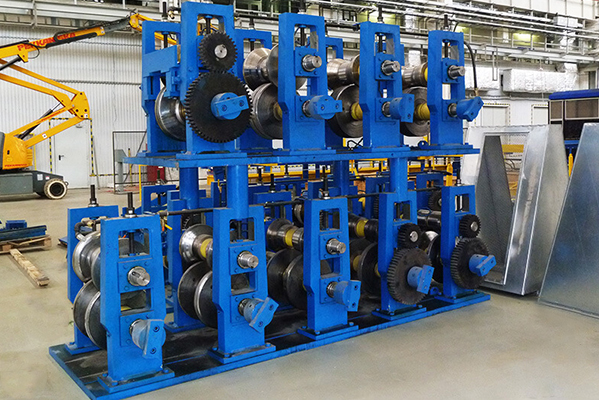Navigation Menu
Contact Us
- Email:
- info@wxavatar.com
- Address:
- Yurong Village, Yuqi Street, Huishan District, Wuxi, China.
Release Date:Jul 10, 2025 Visit:36 Source:Roll Forming Machine Factory
The railroad industry, a cornerstone of global logistics and transportation, is always seeking advancements to improve efficiency, durability, and cost-effectiveness. Among the various technological developments, coil processing technology is steadily gaining traction, moving beyond its traditional roles and becoming more integrated into various aspects of railway manufacturing.

What is Coil Processing Technology?
Coil processing technology refers to the methods and equipment used to handle, cut, shape, and treat metal coils – essentially, large rolls of sheet metal. These coils can be made from various materials, including steel, stainless steel, and aluminum, and come in different thicknesses and widths. The technology encompasses a range of processes such as slitting (cutting into narrower strips), cut-to-length (cutting into specific sheet lengths), leveling (flattening the material), and specialized treatments like heat treatment or surface finishing.
Applications in the Railroad Industry
Historically, the railroad industry has utilized metals in various forms, including plates, beams, and individual components. However, the use of coil-based materials and the associated processing technologies are seeing increased adoption for several reasons:
Railcar Manufacturing: Coil processing is fundamental in producing components for freight and passenger railcars. This includes fabricating parts for car bodies, underframes, and specialized coil cars designed to transport coiled steel themselves. The ability to precisely cut and shape large quantities of steel from coils streamlines production and reduces material waste.
Structural Components: Many structural elements within railway infrastructure, such as certain types of track components, support structures, and platform elements, can benefit from coil-derived materials. Hot-rolled steel coils, for instance, offer excellent strength and durability, making them suitable for demanding railway applications. Their continuous production from coils allows for large-scale, efficient manufacturing.
Coil Springs and Suspension Systems: Coil processing is vital in manufacturing the coil springs used in locomotive and railcar suspension systems. These springs are crucial for absorbing shocks and ensuring a smooth ride. The winding process, whether hot or cold coiling, requires precision to meet the exact specifications for diameter, pitch, and number of coils, which are directly influenced by advanced coil processing techniques.
Specialized Rail Manufacturing: While traditional rail manufacturing involves rolling billets, advancements in coil processing related to material preparation and specific finishing treatments are influencing the quality and characteristics of the steel used for rails. This includes technologies for enhancing the mechanical properties of steel through controlled heating and cooling, which can be applied to large coiled forms of raw material before final rail shaping.
Automated Production: The move towards greater automation in manufacturing facilities aligns well with coil processing technologies. Automated coil lines can feed material directly into various forming and assembly processes, leading to increased production speeds, consistent quality, and reduced labor costs.
Advantages Driving Adoption
Several factors are contributing to the growing mainstream adoption of coil processing technology in the railroad sector:
Efficiency and Speed: Processing materials directly from coils allows for continuous production runs, significantly reducing manufacturing time compared to handling individual sheets or plates.
Material Utilization: Advanced coil processing techniques, including optimized slitting and cut-to-length operations, minimize scrap and improve material yield, leading to cost savings.
Consistency and Quality: Modern coil processing lines incorporate precise controls and automation, ensuring high dimensional accuracy and consistent material properties across large batches, which is critical for safety and performance in railway applications.
Cost-Effectiveness: The ability to purchase steel in coil form often comes with cost advantages, and efficient processing further enhances the economic benefits.
Material Versatility: Coil processing can handle a wide range of metal types and thicknesses, providing flexibility for various railway components and applications.

Conclusion
Coil processing technology is indeed becoming increasingly integral to the railroad industry. From the fundamental components of railcars to specialized springs and structural elements, the advantages of efficiency, quality, and cost-effectiveness offered by these technologies are compelling. As the industry continues to innovate and seek more streamlined and precise manufacturing methods, the role of coil processing is likely to expand further, solidifying its position as a mainstream and essential part of modern railway production.